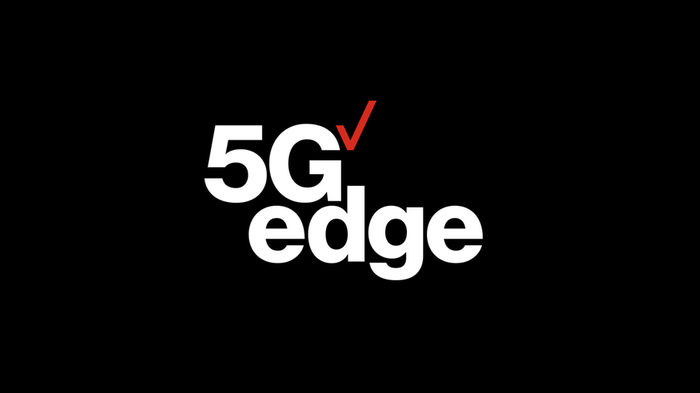
What you need to know:
- Verizon and AWS are adding two additional 5G MEC cities bringing the total to 10 in 2020
- By moving AWS compute and storage to the edge of Verizon’s 5G Ultra Wideband network, innovators can develop new latency-sensitive applications that can transform industries ranging from healthcare to transportation, finance and entertainment
- HARMAN, Inception XR and Skyward are using Verizon 5G Edge with AWS Wavelength to test how 5G and MEC can enhance applications for connected vehicles, immersive content and drones
NEW YORK – Developers and businesses can tap into the power of Verizon 5G Edge with AWS Wavelength in two new locations: Denver and Seattle. Verizon 5G Edge, a mobile edge computing (MEC) platform, lets developers build applications for mobile end-users and wireless edge devices with ultra-low latency, extended battery life, massive throughput and more. Verizon and AWS launched Verizon 5G Edge with AWS Wavelength in August in Boston and the San Francisco Bay Area and have since expanded to 10 cities including Atlanta, Dallas, Las Vegas, Miami, New York and Washington, DC.
5G Edge moves the data and processing done by applications and services closer to the end user at the edge of the network. This shortens the roundtrip that data needs to travel, reducing lag time, or latency, and helps critical, performance-impacting applications respond more quickly and efficiently. AWS Wavelength brings AWS compute and storage services to the edge of Verizon’s network, allowing innovators to develop applications with increased speeds, massive bandwidth and ultra-low latency.
Many innovators are already testing their solutions at the edge of Verizon’s 5G network with AWS Wavelength including HARMAN and Inception XR.
HARMAN is using Verizon 5G Edge with AWS Wavelength to support 5G Edge-based Cellular Vehicle-to-Everything (C-V2X) computing capabilities. C-V2X communications technology lets vehicles communicate with multiple devices on the go and when stationary. To accomplish that, C-V2X uses cell phone base station technology to connect vehicles and infrastructure units within the transportation ecosystem. The use of 5G Edge with AWS Wavelength lowers latency and offers higher bandwidth so that customers can deliver improved communications and connectivity between drivers and the applications in their vehicles and on their devices.
“The combination of 5G and C-V2X edge computing not only can offer increased vehicular safety by informing drivers of road work restrictions, speed limit warnings and forward collision warnings, but also gives consumers unprecedented access to their favorite content faster than ever before,” says Ram Iyer, Senior Director of Telematics Engineering at HARMAN. “With the combination of Verizon 5G Edge, AWS Wavelength, and HARMAN’s automotive industry leading 5G Edge technology, consumers can enjoy exceptional availability of all their favorite content wherever they may be.”
Inception XR delivers XR (extended reality) apps with some of the world’s best-known IP, across multiple content categories. This platform enables Inception and its partners to create and distribute content across platforms, devices and verticals in a highly scalable and cost-effective way. Inception is currently working with Verizon 5G Edge and AWS Wavelength to test how increased bandwidth and lower latency can improve the richness and resolution of mobile, immersive content for both businesses and consumers.
“We are excited to share with the world our immersive XR experiences using Verizon 5G Edge with AWS Wavelength,” said Benny Arbel CEO of Inception XR. “With 5G and MEC, top-quality content can now be viewed in a richer, more enhanced way. By delivering content that is rendered on a GPU a hundred times more powerful than the mobile device GPU, we can achieve an experience with millions of polygons streamed seamlessly with low latency giving the end user a truly unique experience.”
Verizon is also using 5G Edge with AWS Wavelength internally to build new drone applications. Skyward, a Verizon company that provides software and consulting for companies that use drones commercially, has attached a virtual reality (VR) camera to a drone that sends the video content over 5G and MEC to multiple viewers on the ground. The use of 5G and MEC reduces the amount of hardware on the drone removing weight and heat which means drones can fly longer and go greater distances and it drives down cost significantly by reducing the amount of onboard computing. The reduced latency and massive bandwidth provided by 5G Edge with AWS Wavelength also means the amount of viewers and audience size can increase, and pilots can use computer vision or laser-based obstacle detection systems to gain real-time situational awareness.
“By bringing together the unprecedented performance of Verizon’s 5G Ultra Wideband network with Verizon 5G Edge and AWS’s compute and storage services, we’ll support innovation and transformation across nearly every industry helping to usher in the Fourth Industrial Revolution,” said Tami Erwin, CEO. “Together with AWS, we made 5G mobile edge compute real in 2020 and next year will bring even more MEC locations and increasing capabilities and toolsets for developers to grow the 5G MEC ecosystem.”
Learn more information about Verizon 5G Edge and Verizon’s 5G technology. For more information on AWS Wavelength visit here.
Other resources:
View Skyward video.
View Harman video.
PR Archives: Latest, By Company, By Date